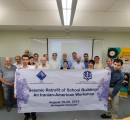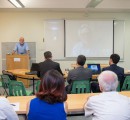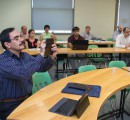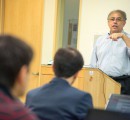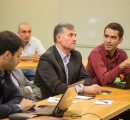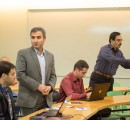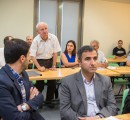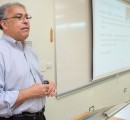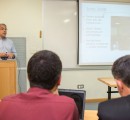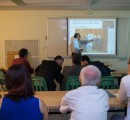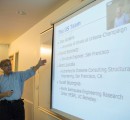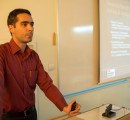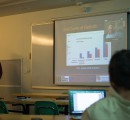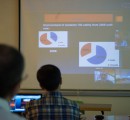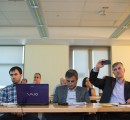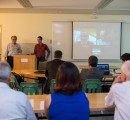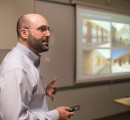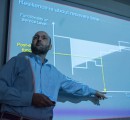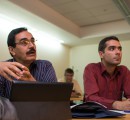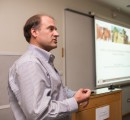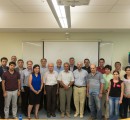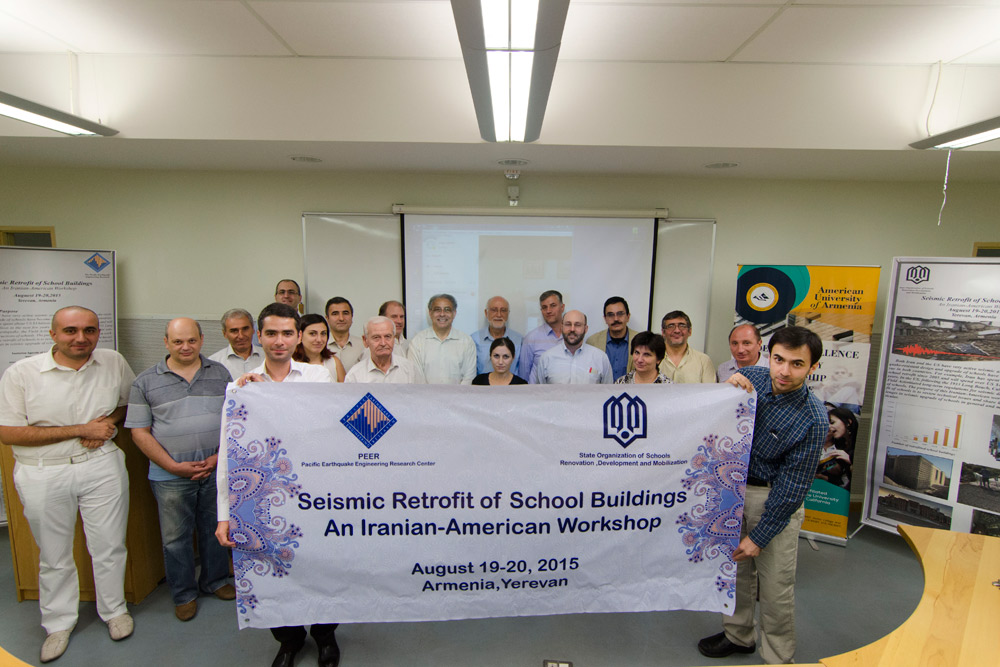
AUA Hosts Meeting of American and Iranian Earthquake Engineers
4 min readYEREVAN, Armenia – On August 19 and 20, 2015, the American University of Armenia (AUA) hosted a meeting of earthquake engineers from the United States and Iran. The focus of this intensive two-day session, which also included the participation of several Armenian experts, was the seismic retrofit of schools.
“This workshop on seismic retrofit of schools brought together earthquake engineers from two countries, Iran and the United States,” said AUA President, Dr. Armen Der Kiureghian. “We are very glad that Armenia and AUA served as the forum for bringing them together. Armenia has good relations with both countries and we hope we can be of service in facilitating further dialog between their scientists, engineers and educators.”
People-To-People Interactions with a Positive Outcome
This meeting was part of a long collaboration between Iranian and American earthquake engineers, initiated by the United States National Academy of Sciences (NAS). Workshops have been held on an almost annual basis since 2008 in the US, Iran, and most recently, in Turkey.
During the latest workshop, the group decided to focus their collaborative efforts on a specific area of earthquake engineering. With the support of the NAS, they got a small research project funded by the US on the seismic retrofit of schools. Dr. Yousef Bozorgnia is the Executive Director of the Pacific Earthquake Engineering Research Center (PEER) at the University of California, Berkeley, and the lead organizer of this meeting series. He noted, “We are interested in fostering people-to-people interactions on non-political topics, something that could have a positive outcome.”
Seismic Retrofit: A Mutual Learning Opportunity
The seismic retrofit of schools was an appropriate topic for a number of reasons. Both Iran and the US have very active seismic areas. Additionally, earthquake-resistant design and upgrade of schools have become an important issue in both countries. According to Dr. Bozorgnia, Iran has 16,000 schools that are vulnerable to earthquakes. Most are unreinforced masonry buildings (URM), which could collapse from even a moderate earthquake. Since the 2003 earthquake in Bam, Iran has launched a major program to retrofit schools, having spent about $3 billion on school retrofit since 2005, with a plan to spend over $4 billion in the next few years.
In the US, following the 1933 Long Beach, California earthquake, the Field Act initiated long-term regulations for seismic design and construction of schools. “Iranian earthquake engineers are using several American building codes and guidelines,” explained Dr. Bozorgnia. “So this is an interesting learning experience for all of us, because they are using them on such a massive scale. In the US, we don’t have 16,000 schools going through a retrofit program, so the learning is mutual for both Iran and the US. It’s a win-win situation.”
Enter AUA: A Win-Win-Win
So where does AUA fit into all of this? Several factors converged to make Armenia and AUA the ideal destination to convene on this project, the results of which will be published in a report at the end of the year. “This year, we were looking for a place that was convenient for the Iranians and Americans,” explained David Bonowitz, a structural and earthquake engineer from San Francisco. Due to its good relations with both countries, its geographical proximity to Iran, and President Armen Der Kiureghian’s affiliation with UC Berkeley and PEER, AUA became a very attractive option.
Dr. Der Kiureghian, himself a civil engineer who has spent the majority of his illustrious career at UC Berkeley, was instrumental in making it happen. “As an Iranian-Armenian, a citizen of the United States, currently a resident of Armenia, and a specialist in earthquake engineering, I was particularly happy that this workshop happened at AUA,” he said. “It brought together my three national identities and my professional expertise in a university that I helped found.”
Convenience and affiliations aside, the topic of seismic retrofit is highly relevant to Armenia. Of its 1400 schools, roughly 900 are in need of retrofitting and 350 are in extremely poor seismic condition, requiring immediate strengthening or replacement. The Asian Development Bank has promised the Armenian government a loan to retrofit these schools and work is now in progress to identify the most vulnerable schools and the most effective ways of retrofitting them.
Armenian experts actively participated in the workshop. It was an enriching experience for all involved, creating what Dr. Bozorgnia coined a “win-win-win” situation. One of the more than 10 Armenian participants, Dr. Tigran Dadayan, Head of the Buildings Structures Chair at the National University of Architecture and Construction of Armenia, said, “Making buildings earthquake resistant is one of the main problems we have in Armenia, as in many countries around the world. This workshop shows us that international scientific cooperation can help solve many problem existing in the world.”
“The topic of seismic retrofit of schools is of vital interest to Armenia,” stated Dr. Der Kiureghian, “especially as Armenia is about to begin a large-scale school retrofit project. I am very happy that we were able to invite a good number of Armenian earthquake engineers and seismologists to participate in the workshop. They participated in the discussions and developed new professional linkages. I believe all three sides learned a lot from each other’s experiences.”
Moving Forward: A Three-Way Collaboration
The benefit of this international cooperation was not lost on any of the participants. “It’s a historical opportunity,” said Dr. Abdolreza S. Moghadam, Associate Professor at the International Institute of Earthquake Engineering and Seismology in Iran. “The best way forward is through these natural networks of colleagues. [This is how] the configuration of future cooperation really can be shaped.”
“This year, this stage of cooperation will officially finish,” he continued, “so they are preparing a proposal for the next stage. And now Armenia is to be included in this cooperation as well. So, I assume that from now on, we will be three sides.”
The two-day workshop ended on a high note, with hopes that this partnership will continue to grow and serve as a model for future scientific collaborations that cross physical and political boundaries for the greater good.
Founded in 1991, the American University of Armenia (AUA) is a private, independent university located in Yerevan, Armenia and affiliated with the University of California. AUA provides a global education in Armenia and the region, offering high-quality, graduate and undergraduate studies, encouraging civic engagement, and promoting public service and democratic values.

